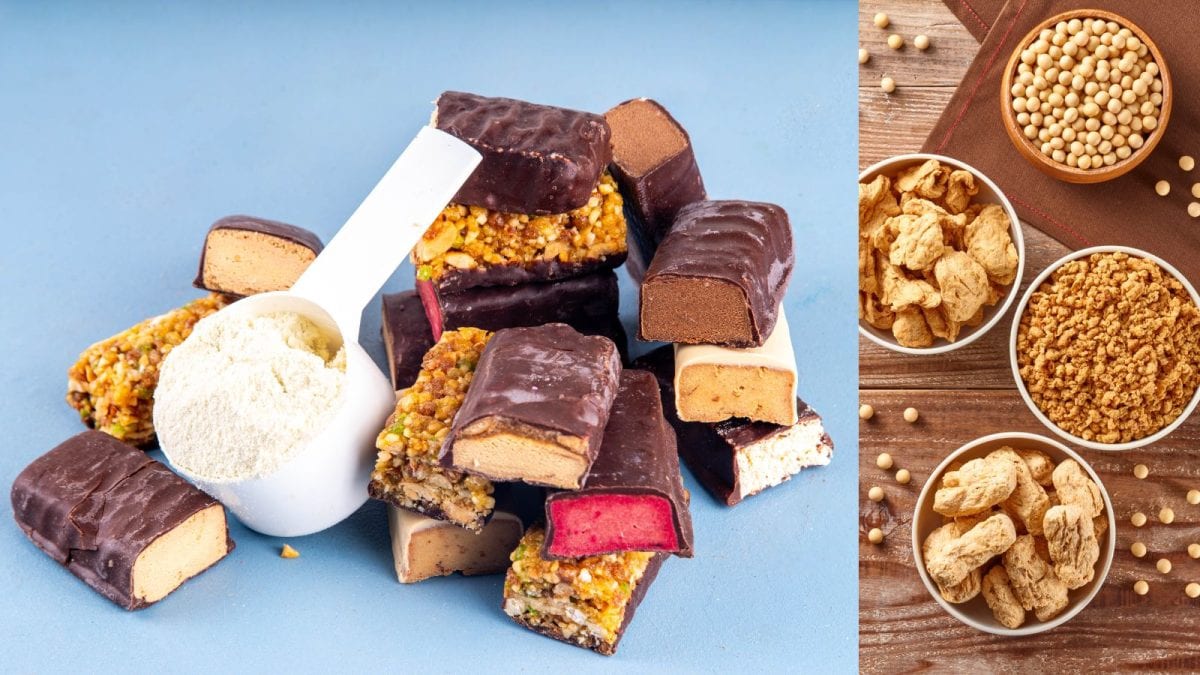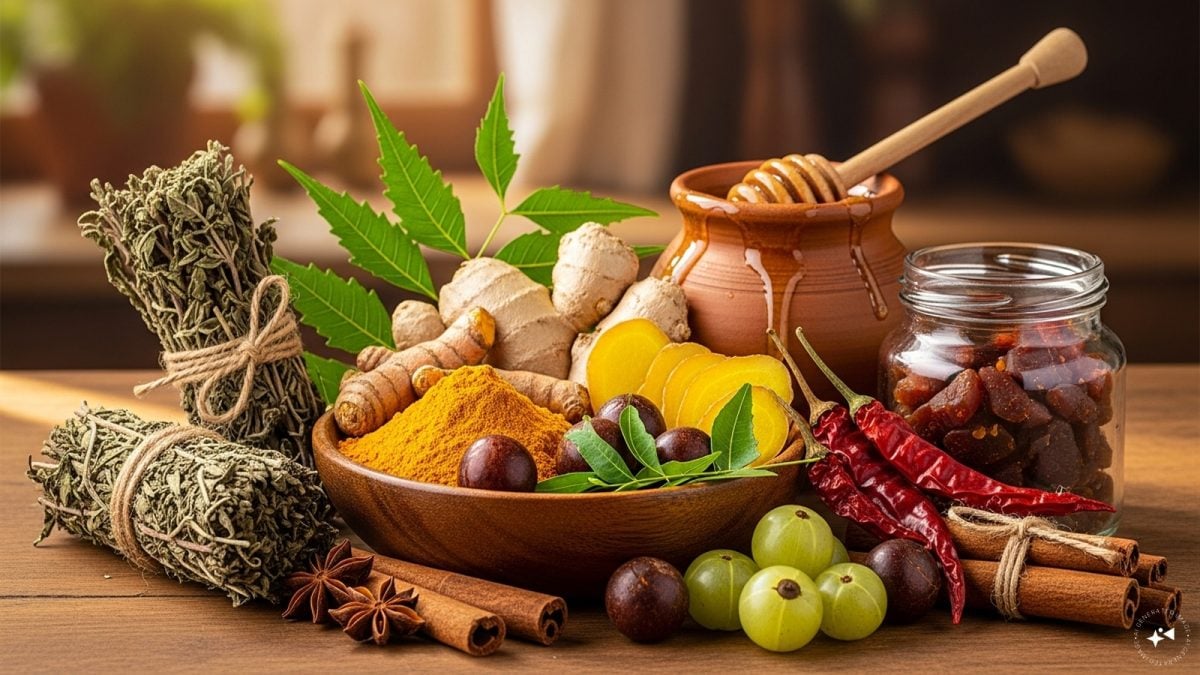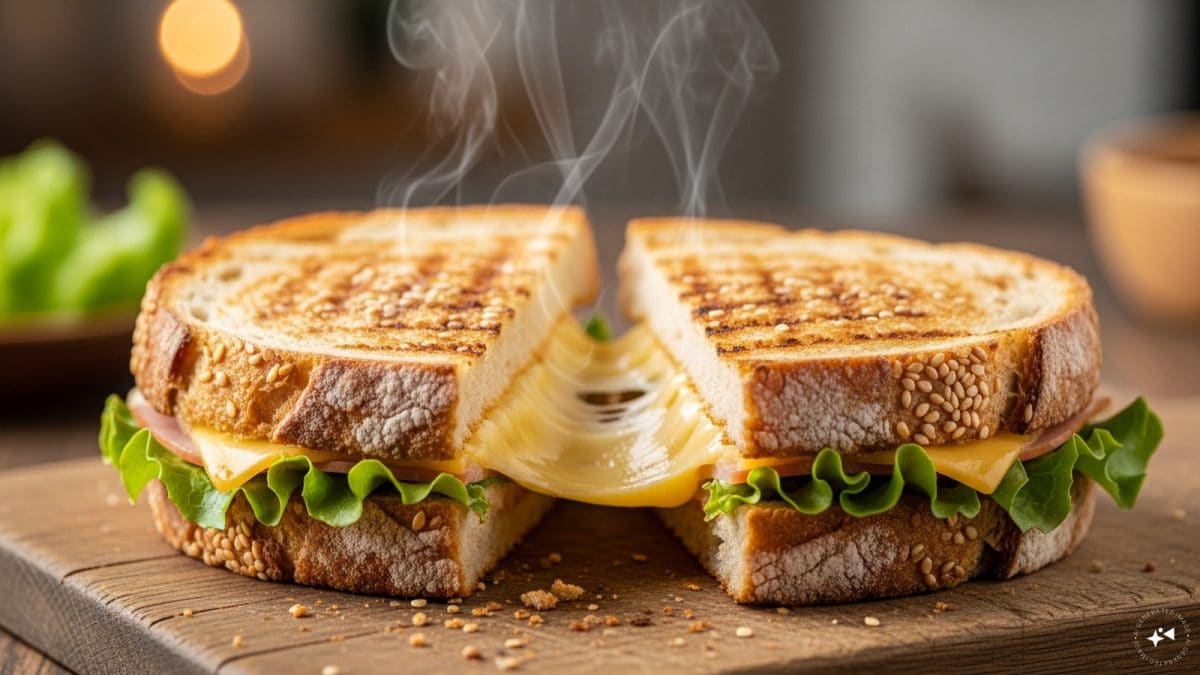Last Updated:
Nutrition surveys show that nearly 70% of Indians still consume less protein than recommended, but awareness campaigns and product innovation are narrowing that gap.

From flavoured yogurts and protein-packed breakfast cereals to “functional” beverages and biscuits, the pandemic spurred a surge in innovation (Image: Canva)
In recent years, protein-rich snacks have quietly shifted from gym-bag niche to grocery-aisle staple in India. Bars, chips, and shakes once reserved for fitness enthusiasts are now finding their way into everyday snacking choices. As consumer habits evolve and wellness takes front stage, the lines between indulgence and nutrition are blurring and the protein trend is leading the charge.
India’s growing protein awareness
A decade ago, most Indians associated protein with athletes or bodybuilders. Today, awareness of its role in everyday health has grown rapidly. Nutrition surveys show that nearly 70% of Indians still consume less protein than recommended, but awareness campaigns and product innovation are narrowing that gap.
Government surveys and independent studies by the Indian Market Research Bureau have repeatedly found that average protein intake in Indian diets hovers around 47 grams per day – below the global average and the 60–70 grams recommended for an adult. That gap has created both a nutritional need and a business opportunity.
The pandemic and the “wellness trigger”
The COVID-19 pandemic reshaped how Indians think about food. With immunity and overall wellness suddenly at the forefront, consumers began to look for foods that offered long-term health benefits rather than quick calories. Protein-rich products fit perfectly into that shift.
Protein is seen as the nutrient that supports immunity, muscle repair, satiety, and metabolism. From flavoured yogurts and protein-packed breakfast cereals to “functional” beverages and biscuits, the pandemic spurred a surge in innovation. Post-2020, brands positioned protein not as a supplement but as a lifestyle essential.
What’s driving the boom in protein snacks
Several intersecting factors have turned protein from niche to mainstream:
- Urbanization and changing work habits: Busy urban consumers want quick snacks that feel healthier than traditional fried or sugary options. Protein chips, cookies, and shakes cater to that need.
- Rising disposable incomes: Young professionals and urban families are willing to spend on premium nutrition brands, especially those that promise convenience and clean ingredients.
- Fitness culture on social media: The visibility of fitness influencers and wellness coaches has normalized protein-based eating beyond gyms.
- Expansion of e-commerce: Online platforms and D2C (direct-to-consumer) startups like Myprotein, Oziva, and The Whole Truth have made protein products accessible even in smaller cities.
According to industry estimates, India’s protein supplements and functional food market is now worth over Rs 15,000 crore and growing at 20–25% annually.
From powders to popcorn: new product formats
The first phase of India’s protein market revolved around powders and shakes — the gym staples. Now, the innovation is in snacks. Consumers are looking for products that deliver protein without feeling like a supplement.
- Protein chips and crisps made from chickpeas, soy, and lentils mimic the crunch of regular snacks but with double the protein.• Protein bars — once confined to gyms, are now a mid-day office snack or post-commute pick-me-up.• Yogurt drinks and fortified milk are promoted as breakfast replacements.• Baked snacks and biscuits target children and parents looking for school-friendly protein options.
The key is indulgence with intent – familiar taste, higher nutrition.
The Indian twist: local protein sources
India’s protein evolution isn’t just borrowing from Western fitness culture; it’s also rediscovering native sources. Plant-based proteins from lentils, chickpeas, peas, millets, and mung beans are powering the next wave of innovation.
Traditional staples like sattu (roasted gram flour), soy chunks, and paneer have also been rebranded as high-protein heroes. Start-ups are blending Indian familiarity with global packaging — millet protein bars, mung-bean pancakes, and sattu smoothies.
Experts say this localization is key to affordability and acceptance. While imported whey protein can cost Rs 4,000 a kilo, indigenous sources like pulses or soy can deliver similar nutritional value at a fraction of the cost.
Business opportunity meets competition
For FMCG giants, the protein wave is both an opportunity and a challenge. Nestlé, Amul, ITC, and Britannia have all launched high-protein variants of familiar products. At the same time, dozens of start-ups are entering the field with cleaner ingredient lists, vegan options, and transparent labelling.
While legacy players have distribution muscle, start-ups are winning the trust of younger consumers by positioning themselves as authentic and research-driven. Venture capital interest has followed: between 2021 and 2024, investment in India’s nutrition and protein startups rose sharply, with funding rounds crossing Rs 1,000 crore collectively.
Analysts say this mirrors global trends where “functional food” and “better-for-you snacking” have become multi-billion dollar industries. India’s younger demographic, high smartphone penetration, and growing health consciousness make it one of the fastest-growing frontiers for this category.
The health debate: are all protein snacks healthy?
Despite the booming market, not all “protein snacks” are nutritionally sound. Many products still carry high sugar or sodium content to mask the taste of added protein.
Nutritionists caution that consumers often overestimate the benefits. A “high-protein” biscuit may contain only 5–7 grams of protein per serving, while a single egg offers 6 grams naturally. Without reading labels carefully, it’s easy to fall for marketing language that exaggerates the health benefit.
Another issue is protein quality. Animal-derived proteins like whey are complete (containing all essential amino acids), whereas many plant sources are incomplete and must be combined to provide full nutrition. Nutrition experts recommend variety — pulses, dairy, eggs, and nuts — over relying solely on packaged snacks.
Consumer behaviour: what’s changing
Surveys show that Indian consumers are becoming label-aware. More people now check protein content, sugar levels, and calorie counts before buying. Yet taste and price still matter most.
The average urban buyer looks for snacks that deliver energy and a perception of health, even if they aren’t perfectly balanced. For brands, the challenge is to bridge that gap, combining flavour, affordability, and credible nutrition.
Regulation and the road ahead
The Food Safety and Standards Authority of India (FSSAI) has begun tightening norms for labelling, ensuring transparency in claims like “high protein” or “fortified.” Experts believe this will help standardize the market and reduce misleading branding.
In the long run, as demand grows and domestic sourcing improves, India could become a global hub for plant-based protein innovation. Already, Indian start-ups are exporting protein bars and snacks to the Middle East and Southeast Asia.
The protein trend also intersects with sustainability: plant-based proteins have a lower carbon footprint than meat or dairy, aligning with global climate-conscious consumption patterns.
India’s protein story is no longer just about gym culture, it’s about mainstream food evolution. The protein aisle now sits between indulgence and health, driven by curiosity, convenience, and marketing.
For consumers, the real value lies in understanding what’s inside the packet. For brands, the opportunity lies in building trust through science, transparency, and taste.
As the protein wave matures, it’s not just reshaping diets, it’s redefining how India snacks.
October 23, 2025, 09:40 IST
Stay Ahead, Read Faster
Scan the QR code to download the News18 app and enjoy a seamless news experience anytime, anywhere.







